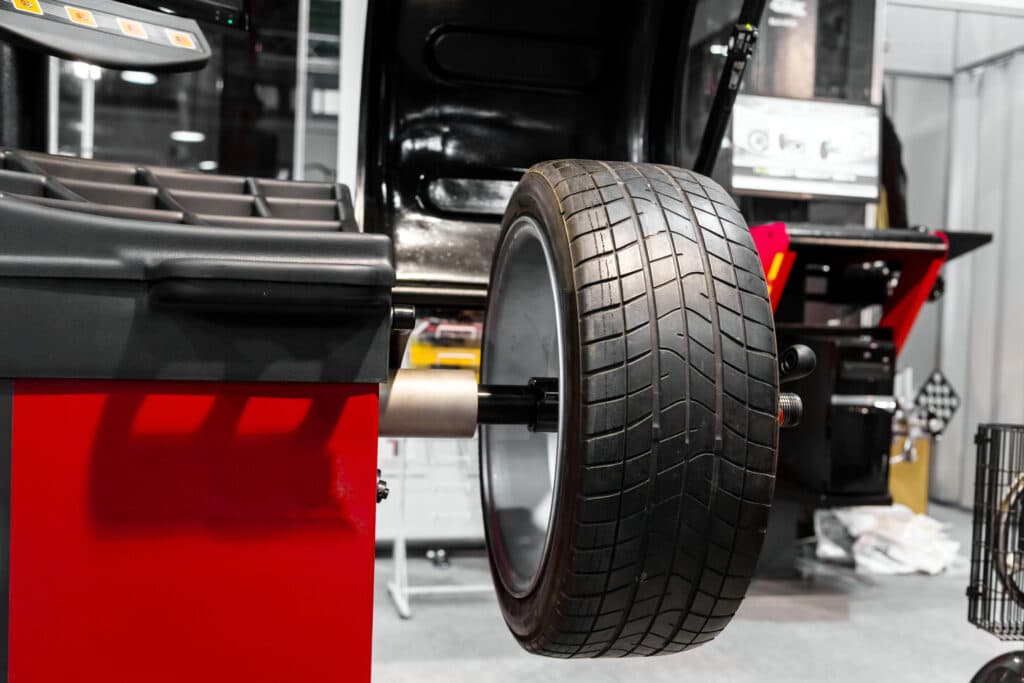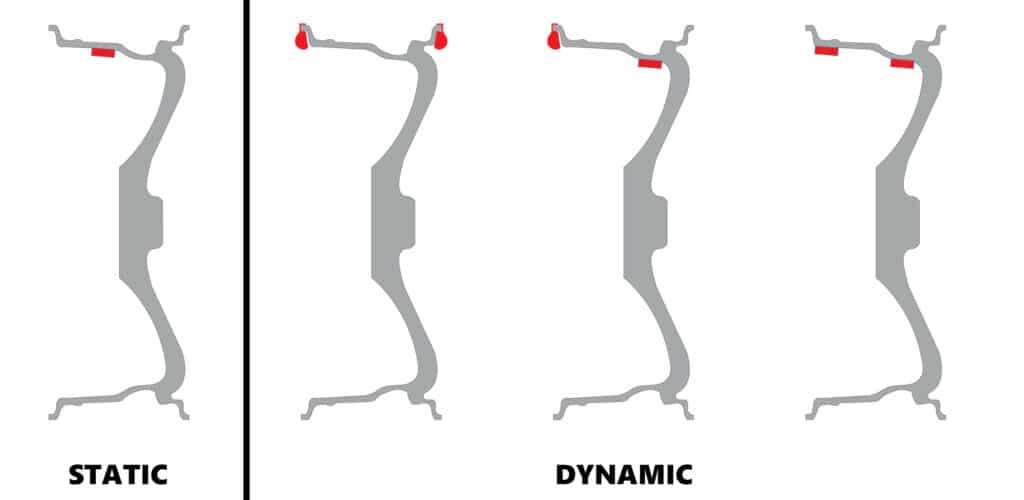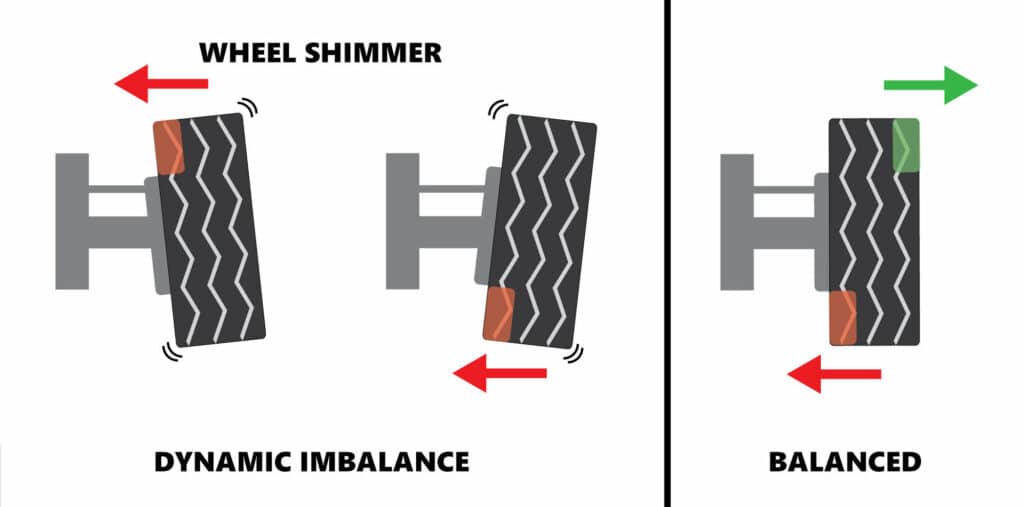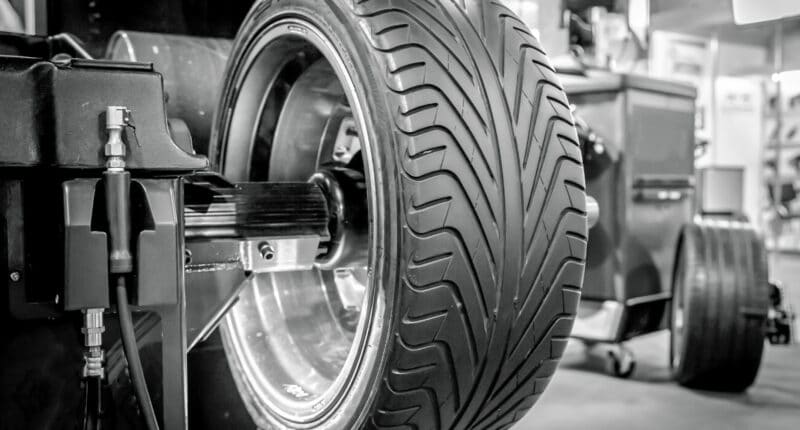It doesn’t matter how expensive or lightweight the wheels and tires are on your car. If they aren’t balanced correctly, you’re likely to run into some issues.
Neglecting this part of your car’s maintenance will directly affect your ride quality and in some cases — could cause you to lose control of your car or end up damaging your tires.
That’s precisely where wheel balancing comes in to save the day. To do it right, it’s important to know the different methods you can use and the purposes they serve.
In this guide, we’ll take you through all there is to know about balancing wheels to get the rotational weight of your car evenly distributed, removing any vibrations, shudder, or road noise. We’ll also guide you through how it is done, and the purpose of wheel weights in the process.
What is Wheel Balancing?
In order for your car to drive the way it should, your wheels need to roll smoothly — and that can only happen if your wheels are perfectly balanced.
Without this, even the smallest weight imbalance can turn your ride into an absolute nightmare — both the wheel and tire assembly will spin unevenly the faster you go.
Keep in mind that out-of-balance tires not only impact your ride quality but also shorten the life of your tires and suspension components like coilovers.
Balancing tackles all these problems at once. The whole point of doing it is to distribute the weight evenly throughout each wheel and tire.

The method involves using a balancing machine that checks each wheel, letting you know exactly which spots of the wheel are heavier than others. From there it all comes down to using weights that are cemented to the lightest spots on your rim — effectively balancing everything out.
Few people are game enough to grab their tool set and try this at home. But fundamentally, there are two important things you should know:
- Balance changes over time: The balance in your wheels diminishes the more you drive your car. As your tire’s tread wears, the balance in your tire changes. It’s very uncommon for a wheel assembly to be perfect but that shouldn’t stop you from rebalancing your wheels at least once during their lifetime. The same goes for when you swap to seasonal tires
- You’re only compensating for imbalance: If you have a damaged rim or irregular tire wear, no method in the world is going to help. The only thing it can do is balance the weight.
If you care about your car, getting this done as part of your regular maintenance when changing to seasonal tires, performing a tire rotation, or after getting a tire repaired is a great idea.
It’s especially important if you’re running staggered wheels with rim offsets with rolled fenders and lots of negative camber as tolerances are much tighter and small variations in wheel movement can cause damage to other car parts.
Though hub-centric rings can help to reduce vibration, they still need to be balanced in the first place. Combined with a wheel alignment, you’re putting your car in good stead for the year ahead.
Different Methods
Ultimately you’ve got two options — static and dynamic.
Choosing between the two really comes down to the kind of imbalance you’re dealing with, and the discrepancy you want with the wheel weights you’ll be using.

Static Balancing
The static method helps when there’s only a slight imbalance in the tire. It’s an older method where, as the name suggests, the wheel or tire assembly is placed on a machine that is static or stationary.
It’s also referred to as a single-plane balancing because as the name describes, it’s only done in a single plane, and you’ll add the compensating weight to the side of the wheel. Most computerized wheel balancers still use this method.
If you’re keen on hiding your weights, the static method is the better option since this method often uses only one weight along the centerline of the wheel.
Dynamic Balancing
Dynamic tire balancing is a modern method where a computerized machine spins the wheel and pin-points exactly where the imbalance lies and the level of vibration.
It’s also called a two-plane balance since it measures lateral and radial force — which is both side-to-side and up and down. This simulates the road force that your car usually endures in real life.
Unlike a static balancing service, this method uses more than one weight per corner, and you can place them at different points on the wheel. It doesn’t necessarily have to be along the centerline.
If you use the dynamic imbalance method, you’re inadvertently statically balancing them as well. Combined with corner balancing, this can really get your car’s handling tuned to perfection.

How Wheel Weights Help
Using weights is the final step in properly balancing your tire and wheel assembly. Wheel weights come in different sizes and styles. The type of weight you need depends on your wheel’s rim profile shape.
The crucial part is making sure that you attach the weights firmly so that they don’t move around or fall off.
Clip-on Weights
As the name suggests, you can attach these weights by directly clipping them onto your rim and using a weight hammer to fix them in place. You’ll find various types of clips because there are different wheel types and covers.
If you’ve got aluminum wheels with a flange for a clip-on weight, you might need an alloy or coated clip to prevent them from corroding your wheels.
Tape-on (Adhesive) Weights
Tape-on or adhesive weights come as strips that are cut to the desired length so you get the necessary weight to balance the wheels. They’re attached with double-sided adhesive tape.

These weights are best used if you don’t want them to be noticeable since they go on the inside of the wheel. You can use them on aluminum wheels and opt for chrome-weighted strips.
Keep in mind that you can easily scratch aluminum wheels, so use plastic protectors on your tire tools to avoid any scratches.
Striking a Balance: Final Thoughts
If you read this far, you now have a better idea of how tire balancing plays an important role in your car’s ride quality and performance. Avoiding the issue could result in some serious problems — especially finding it difficult to control your car at high speeds.
The method you choose depends on how you want your wheels to look and how perfect you want your wheel rotation to be. The static method allows you to hide the weights inside the wheel. In that case, you would also opt for tape-on weights.
Remember that clip-on weights fit various applications, and you can use them on flush-mounted wheel covers, aluminum and steel wheels, and light trucks.
What’s your take? Do you regularly check for uneven tire wear and get your tires aligned? Leave a comment below to let us know which type of weights work best for you!

